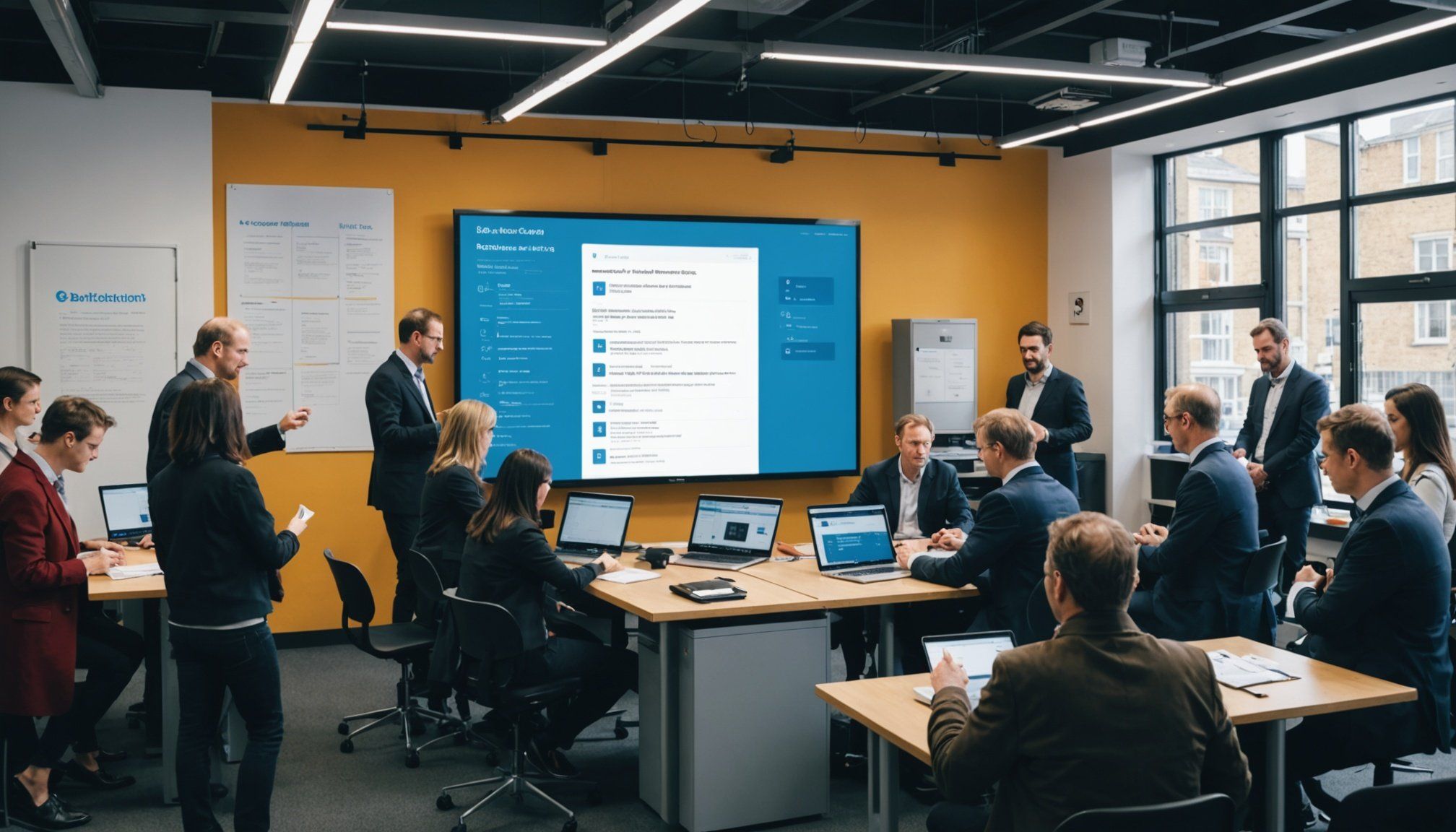Understanding Blockchain Technology for Voting
Blockchain technology emerges as a revolutionary approach to modernise the voting system, offering enhanced security and transparency. At its core, blockchain is a decentralised digital ledger of transactions spread across multiple computers, ensuring that records are immutable and secure. This is particularly beneficial for local elections, where trust and accuracy are paramount.
In a voting context, each vote is a transaction that gets added to a blockchain. This method ensures that votes are tamper-proof and that voter identity remains confidential. One key benefit of blockchain in voting is its ability to maintain the integrity of election results, making it difficult for malicious actors to alter or manipulate data.
Also to see : Mastering geo-targeting: essential techniques for boosting digital marketing success in uk retail
When contrasting blockchain voting with traditional methods, the former offers distinct advantages. Traditional voting systems are often susceptible to fraud and human error, while blockchain provides a robust, fail-safe record. However, implementing blockchain technology for voting requires substantial initial investment in infrastructure and training.
Despite these hurdles, the transition to blockchain can significantly enhance public confidence in the electoral process. As local elections play a crucial role in shaping communities, adopting a blockchain-based voting system could revolutionise how citizens engage with democracy, ensuring every vote counts securely.
Also to discover : Unleashing ai: innovative approaches to enhance customer service in the uk telecom industry
Technological Requirements for a Blockchain Voting Platform
The development of a blockchain voting platform requires careful consideration of several technological requirements. At its core, a robust blockchain platform necessitates both software and hardware components that are central to its operation. Essential software includes a secure blockchain protocol, smart contracts, and cryptographic algorithms to ensure data integrity and privacy. These components must be processed by powerful servers equipped with capabilities like high-speed processors and expansive storage.
In terms of network architecture, it’s crucial to design a system that supports decentralisation and scalability. A distributed network of nodes, each capable of validating transactions, helps achieve a resilient and tamper-proof system. Special attention should be given to ensuring low latency and high reliability to accommodate potentially large voter turnout.
For a successful deployment, the user interface should be user-friendly and accessible to all voters. This involves intuitive navigation, clear instructions, and support for multiple devices and languages. A focus on usability ensures that users of varying technical expertise can participate without difficulty, enhancing overall engagement and trust in the voting process. Implementing these elements creates a reliable and efficient blockchain voting platform.
Security Protocols for Ensuring Voter Data Protection
In today’s digital age, voter data protection is paramount. Implementing robust security protocols, such as multifaceted encryption, can safeguard sensitive information and confidence in democratic processes.
Encryption Techniques
Encryption is a vital tool in securing voter data. By converting voter information into a coded format, it becomes accessible only to authorised individuals. This fortifies databases against unauthorised access and ensures the integrity of the data. There are several encryption methods, such as symmetric and asymmetric encryption, each offering unique benefits. Symmetric encryption uses a single key for encryption and decryption, thus requiring secure key management. Conversely, asymmetric encryption employs two keys – a public key for encryption and a private key for decryption – enhancing security but at a higher computational cost.
Multi-Factor Authentication
Another layer of protection comes from multi-factor authentication (MFA), which requires users to provide several verification methods. This might include something users know (password), something they have (smartphone), and something they are (fingerprint). MFA significantly reduces the risk of unauthorised access, adding an essential security barrier.
Regular Security Audits
To maintain secure systems, conducting regular security audits is crucial. These audits help identify potential vulnerabilities, ensuring timely updates or patches. By proactively assessing and mitigating risks, voter data remains secure, bolstering overall data protection strategies.
Legal Considerations and Compliance for Blockchain Voting
Implementing blockchain voting in the UK necessitates thorough understanding of both legal considerations and compliance with election laws. Central to this are the laws governing elections, which outline stringent requirements to ensure integrity, privacy, and transparency of the voting process. Blockchain technology, with its distributed ledger capabilities, must align with these pre-existing statutory frameworks to be considered viable.
A critical aspect of compliance involves adhering to data protection regulations, such as the UK General Data Protection Regulation (GDPR). Blockchain solutions must ensure that personal voter data is secure, processed lawfully, and that individuals retain control over their data. This often involves complex cryptographic solutions to maintain anonymity while ensuring the authenticity of votes.
Engaging with regulatory bodies and election officials early in the deployment process is vital. Open dialogues can aid in aligning blockchain technology with current regulations, facilitating smoother integration into existing voting systems. This engagement helps address potential challenges and builds a framework that supports innovation while ensuring legislative adherence.
By focusing on these key aspects, stakeholders can work towards a compliant and legally sound blockchain voting system.
Implementation Strategies for Blockchain Voting Systems
Implementing a blockchain voting system requires meticulous planning and execution. To begin, it’s crucial to develop a detailed step-by-step guide for deployment. Start with defining the requirements: determine the scope, identify the voting processes that the blockchain will enhance, and ensure compliance with legal standards.
For effective project management, a solid foundation is essential. Establish clear roles within the project team, from developers to security experts, ensuring each member understands their responsibilities. Adopt best practices by setting achievable milestones and consistently monitoring progress. Agile methodologies may be beneficial, promoting flexibility and regular stakeholder feedback.
Stakeholder involvement is critical. Engaging government officials, technologists, and citizens in the development phase ensures transparency and trust. Conduct workshops and informational sessions to collect valuable input and maintain open communication channels throughout the voting system’s implementation.
The deployment phase involves rigorous testing in controlled environments to identify potential issues before going live. Conduct security audits to address vulnerabilities and establish contingency plans for unexpected scenarios. Finally, educate users on the new system, emphasising ease of use and security measures to inspire confidence in this transformative voting technology.
Case Studies of Blockchain Voting in Practice
Exploring the successful examples of blockchain voting sheds light on its real-world effectiveness. In local elections, such as Utah County’s municipal elections in 2019, blockchain technology was used to facilitate remote voting for a segment of voters, including overseas citizens. This initiative aimed to increase participation among otherwise underrepresented groups. The result was encouraging, demonstrating both an increase in voter turnout and enhanced trust in the electoral process.
The experiences drawn from these case studies offer crucial insights. One significant lesson was the need for a robust technological infrastructure. Ensuring the system could handle increased user traffic without compromising security was pivotal. Moreover, an emphasis on user-friendly interfaces emerged as essential, enabled voters to readily navigate the voting process.
Blockchain voting’s impact on transparency and voter engagement was particularly noteworthy. Its inherently transparent nature allowed voters to verify their votes independently, thereby boosting confidence in the system’s integrity. Furthermore, engaging voters with a modern, secure voting method piqued interest, potentially leading to higher future voter participation.
These practical examples of blockchain voting demonstrate a promising direction for electoral processes, providing lessons to improve success in different settings.
Best Practices for Maintaining Platform Integrity
Platform integrity is essential for trust and reliability within a voting system. To ensure its security, follow these best practices:
Regular updates and maintenance are crucial to safeguarding any platform. Ensure that your systems are routinely checked, patched, and updated to protect against vulnerabilities. This proactive approach not only enhances security but also supports the smooth functioning of the voting system.
Monitoring and responding swiftly to security incidents play a vital role in maintaining integrity. Implement a robust incident response plan and employ systems to detect and manage threats. Platform integrity is upheld when potential security breaches are identified and rectified in a timely manner.
Educating users and stakeholders about best practices for security can greatly enhance the platform’s overall integrity. Organising seminars and workshops can help users understand the importance of security protocols and how to implement them effectively.
Integrating these strategies fosters a resilient voting system that stakeholders can rely on. Providing a secure environment boosts confidence and encourages active participation.
By emphasising regular updates, vigilant monitoring, and comprehensive education, maintaining platform integrity becomes a sustainable effort. This ensures that the voting system remains trustworthy and secure, safeguarding all involved parties.
Potential Challenges and Solutions in Blockchain Voting
As blockchain voting emerges, some potential challenges highlight risks to its system integrity. Identifying these issues remains crucial to ensure a secure and reliable process.
One common challenge involves scalability. As more voters participate, maintaining efficiency without compromising security can become daunting. Solutions focus on improving scalability via tools like sharding, which divides the data into smaller parts to manage larger loads.
Another concern is privacy. While blockchain ensures transparency, it may inadvertently disclose voter identities. Zero-knowledge proofs offer a solution, allowing a party to prove voter authenticity without revealing private information.
Security threats pose a significant risk to system integrity. Attackers may attempt to manipulate votes or disrupt the network. Implementing advanced cryptographic techniques and regular system audits can deter these threats, bolstering the voting process’s security layers.
Interoperability between different systems is another issue. A lack of standard protocols can hinder seamless integration. Establishing unified standards and interfaces facilitates smoother interoperability, enhancing system reliability.
Addressing these challenges involves continuous innovation and collaboration. By understanding potential challenges in blockchain voting and implementing robust solutions, stakeholders can harness the technology’s full potential with confidence.










